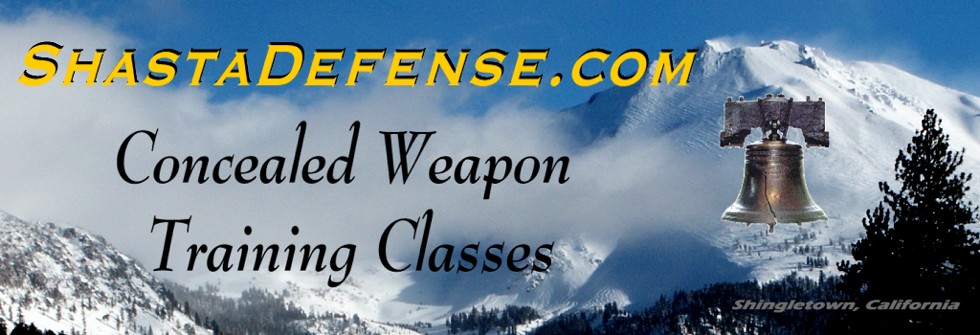

|
|
It all happened so quickly! By: A. Nathan Zeliff, Authorized CCW Instructor The holidays are coming. Family and friends will be traveling on roads, sometimes at night. Hopefully, when traveling in your vehicle you have some supplies, including extra food, water, and cold weather gear. Of course, you have a spare tire. With these and other provisions, and your car in good running condition, you arenít worried about the trip because you are prepared. But are you? Crime and violent attacks only happen to "the other guy", until it happens to you. Did you know that an average person can attack you from 21 feet away and stab you within 1 Ĺ seconds? Yes, read that again, and watch the second hand on your watch. When 2 seconds have passed, you have been slammed to the ground and stabbed at least 2 times. Most people donít realize this. So when you stop late at night at the gas station, or convenience store, what steps can you take to avoid being a victim? Well, a primary step is to simply be AWARE of your surroundings. Pay attention to the people around you. If something doesnít look right, then leave. If you are non-attentive and look like a sheep, then you can expect to be eaten. Predatory criminals are out, and they are generally looking for easy targets. If donít like the looks of that "guy" over there, then leave and donít get near him. Also, try to maintain a lower profile. Donít wear that glitzy jewelry, flash a wallet full of cash, or have valuables and packages visible in your car. Of course we have all seen the television advertisement where the bad guy kicks in the door as the alarm rings, and the lady holds her child as she speaks with the alarm company representative. She is told - help is on the way. Letís get real. The only one in that scene who would feel any relief from that call is the predator. Why? Because he knows that it will take over 12 MINUTES for the police in Redding to respond to a high priority call (e.g., homicide, robbery rape, burglary, stabbing etc...). Further, if he chose to target you in an outlaying area, for example, Shingletown or other similar areas, it will take at least 20 minutes for an officer to arrive. Further, that assumes the road conditions are good (e.g., no snow or ice on the roads, etc...), and that the police have resources available. That also assumes that your phone line hasnít been cut or that you have cell reception from where you are calling. Also, you have to advise the police of your exact location. You can see that a 911 call telling the police that "I am on highway 44 past Shingletown" or "I am on highway 5 between Redding and Cottonwood" arenít good enough. Travel still takes time, even for the police, and they have to know where they are going. If you have a firearm at home or you carry one with you (with your Concealed Weapons Permit), then you may have the right equipment, but, are you actually prepared? Or, do you have a false sense of security? Have you dry fired your weapon 15 minutes per day? Do you live fire your weapon at least 1 time per month? Have you practiced drawing your firearm from concealment, and, compared the time it takes you to draw and fire two shots (hitting center of mass at 7 yards) with the less than 2 seconds for the attacker to stab you? Of course, you must follow strict safety procedures in performing these tasks. Do you know the proper 5 step presentation of a gun from your holster? Do you know when it may be proper to draw your firearm when a potential deadly threat is presented? Do you know the legal standards as to when you can fire your firearm in self defense? Also, if you must shoot to defend your life, do you actually know what you should do with your firearm before the police arrive? How about what should you do when the police arrive so that you donít get shot? After all, they have been told there is a "man with a gun", and when they arrive, there you are - "a man with a gun". Do you know how to respond so you donít get shot? Do you know what statements you should make and when to stop talking? After a deadly attack, you are going to experience various physio and psychological reactions which will render you unable to make specific and accurate statements as to what just happened. Wrong statements can result in your being prosecuted and maybe going to jail. These are all matters covered in my Concealed Weapons Training Course. The same factors apply whether you carry a firearm for self defense or have a weapon at home for self defense. You need to know the answers to the questions, and have actually practiced what you will do and say - before the unimaginable happens to you. The above is merely an introductory article and is not a substitute for taking a firearm safety and training course. Nathan Zeliff is an authorized instructor for Concealed Weapon Permit Courses in Shasta and Tehama Counties; and is a Certified NRA Instructor in the following disciplines: Pistol, Rifle, and Personal Protection in the Home. Website: www.ShastaDefense.com 20101112 |